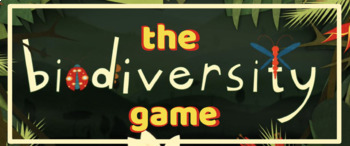The Virtual Biodiversity Game
Darlene Tieu
26 Followers
Grade Levels
6th - 12th, Homeschool
Subjects
Resource Type
Standards
NGSSMS-LS2-5
NGSSMS-LS2-1
NGSSHS-LS4-6
NGSSMS-ESS3-4
NGSSMS-ESS3-3
Formats Included
- Google Drive™ folder
- Internet Activities
Pages
27 pages
Darlene Tieu
26 Followers

Made for Google Drive™
This resource can be used by students on Google Drive or Google Classroom. To access this resource, you’ll need to allow TPT to add it to your Google Drive. See our FAQ and Privacy Policy for more information.
What educators are saying
Our driving force for the ecology unit is biodiversity. This game allowed students to see how biodiversity can be affected. They were engaged and enjoyed the activity.
My 7th grade students loved doing this resource. They enjoyed trying to be the best to acquire the greatest number of species and to also be the worst possible to lose all the species.
Description
Students can use this Google form to make choices that determine how many species survive or go extinct in their ecosystem. Through 5 rounds, students are exposed to concepts such as biodiversity, biomes, climate, niches, pollution, and human impact. Students make choices and can see the impact it has on biodiversity (the number of species)
This interactive activity is a great introduction to biodiversity. It is a great tool to get students thinking about what contributes to increased or decreased biodiversity, human impact, and the importance of biodiverse ecosystems.
This product includes a scorecard, slides to introduce the activity, slides with notes debriefing the activity, and possible reflection questions.
Total Pages
27 pages
Answer Key
N/A
Teaching Duration
1 hour
Report this resource to TPT
Reported resources will be reviewed by our team. Report this resource to let us know if this resource violates TPT’s content guidelines.
Standards
to see state-specific standards (only available in the US).
NGSSMS-LS2-5
Evaluate competing design solutions for maintaining biodiversity and ecosystem services. Examples of ecosystem services could include water purification, nutrient recycling, and prevention of soil erosion. Examples of design solution constraints could include scientific, economic, and social considerations.
NGSSMS-LS2-1
Analyze and interpret data to provide evidence for the effects of resource availability on organisms and populations of organisms in an ecosystem. Emphasis is on cause and effect relationships between resources and growth of individual organisms and the numbers of organisms in ecosystems during periods of abundant and scarce resources.
NGSSHS-LS4-6
Create or revise a simulation to test a solution to mitigate adverse impacts of human activity on biodiversity. Emphasis is on testing solutions for a proposed problem related to threatened or endangered species, or to genetic variation of organisms for multiple species.
NGSSMS-ESS3-4
Construct an argument supported by evidence for how increases in human population and per-capita consumption of natural resources impact Earth’s systems. Examples of evidence include grade-appropriate databases on human populations and the rates of consumption of food and natural resources (such as freshwater, mineral, and energy). Examples of impacts can include changes to the appearance, composition, and structure of Earth’s systems as well as the rates at which they change. The consequences of increases in human populations and consumption of natural resources are described by science, but science does not make the decisions for the actions society takes.
NGSSMS-ESS3-3
Apply scientific principles to design a method for monitoring and minimizing a human impact on the environment. Examples of the design process include examining human environmental impacts, assessing the kinds of solutions that are feasible, and designing and evaluating solutions that could reduce that impact. Examples of human impacts can include water usage (such as the withdrawal of water from streams and aquifers or the construction of dams and levees), land usage (such as urban development, agriculture, or the removal of wetlands), and pollution (such as of the air, water, or land).


